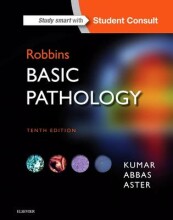Summary: Pathology
- This + 400k other summaries
- A unique study and practice tool
- Never study anything twice again
- Get the grades you hope for
- 100% sure, 100% understanding
Read the summary and the most important questions on Pathology
-
Lecture 1 - Ch2: Cell injury, cell death and adaptations
This is a preview. There are 74 more flashcards available for chapter 02/02/2021
Show more cards here -
What is the difference between etiology and pathogenesis?
Etiology : the cause of the development of disease, 'initial damage' (V.cholerae )Pathogenesis : the development of a disease, 'further damage' (cholera-diarrhea ) -
What are the consequence of damage?
- It can be reversible
- Lead to adaption
- Lead to death of the cell
-
What happens with myocardial hypertrophy?
- Mechanical
stretch. Induction of embryonic genes. It increases the mechanical performance and decreases the work load. Agonist. It increases the synthesis of contractile proteins and thereby increase the mechanical performance. Growth factors. It increase the production of growth factors.
- Mechanical
-
What happens where there is oxygen shortage?
The cell swells because of failure of Na/K ATPase -
Which form of cell death is anti-inflammatory?
Apoptose -
Triggers extrinsic apoptosis-induction
A lethal signal from outside the cell (FasL , TNF) triggers throughreceptor activation a cascade that leads toapoptosis . -
Describe the extrinsic apoptosis pathway
- Ligand binds
- Adaptor proteins bind via death domain and recruit and activate caspase-8
- Ligand binds
-
Triggers mitochondrial (intrinsic) pathway of apoptosis-induction
- Lack of survival signals
- Damage
- Stress of cell
- Lack of survival signals
-
Describe intrinsic pathway
- BH3 sensors the triggers
- It inactivates the Bcl-2 family
- Activation of BAX/BAK channels
- Cytochrome C and other pro-apoptotic proteins leak out the mitochondria
- They activate caspase 9
- Apoptosis
- BH3 sensors the triggers
-
What is the cause of follicular lymphoma?
Loss op apoptosis-response by overexepression of BCL2-gen
- Higher grades + faster learning
- Never study anything twice
- 100% sure, 100% understanding

































